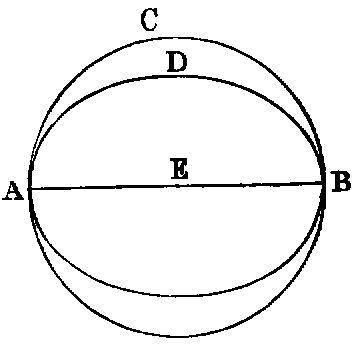Proposition 3.13

A circle does not touch a circle at more points than one, whether it touch it internally or externally.
For, if possible, let the circle ABDC touch the circle EBFD, first internally, at more
points than one, namely D, B.
Let the centre G of the circle ABDC, and the centre H of EBFD, be taken.
Therefore the straight line
joined from G to H will fall on B, D. [III. 11]
Let it so fall, as BGHD.
Then, since the point G is the centre of the circle ABCD,
BG is equal to GD;
Again, since the point H is the centre of the circle EBFD,
BH is equal to HD;
but it was also proved much greater than it: which is impossible.
Therefore a circle does not touch a circle internally at more points than one.
I say further that neither does it so touch it externally.
For, if possible, let the circle ACK touch the circle ABDC at more points than one, namely A, C, and let AC be joined.
Then, since on the circumference of each of the circles
ABDC, ACK two points A, C have been taken at random, the straight line joining the points will fall within each circle; [III. 2] but it fell within the circle ABCD and outside ACK [III. Def. 3]: which is absurd.
Therefore a circle does not touch a circle externally at more points than one.
And it was proved that neither does it so touch it internally.
Therefore etc. Q. E. D.
